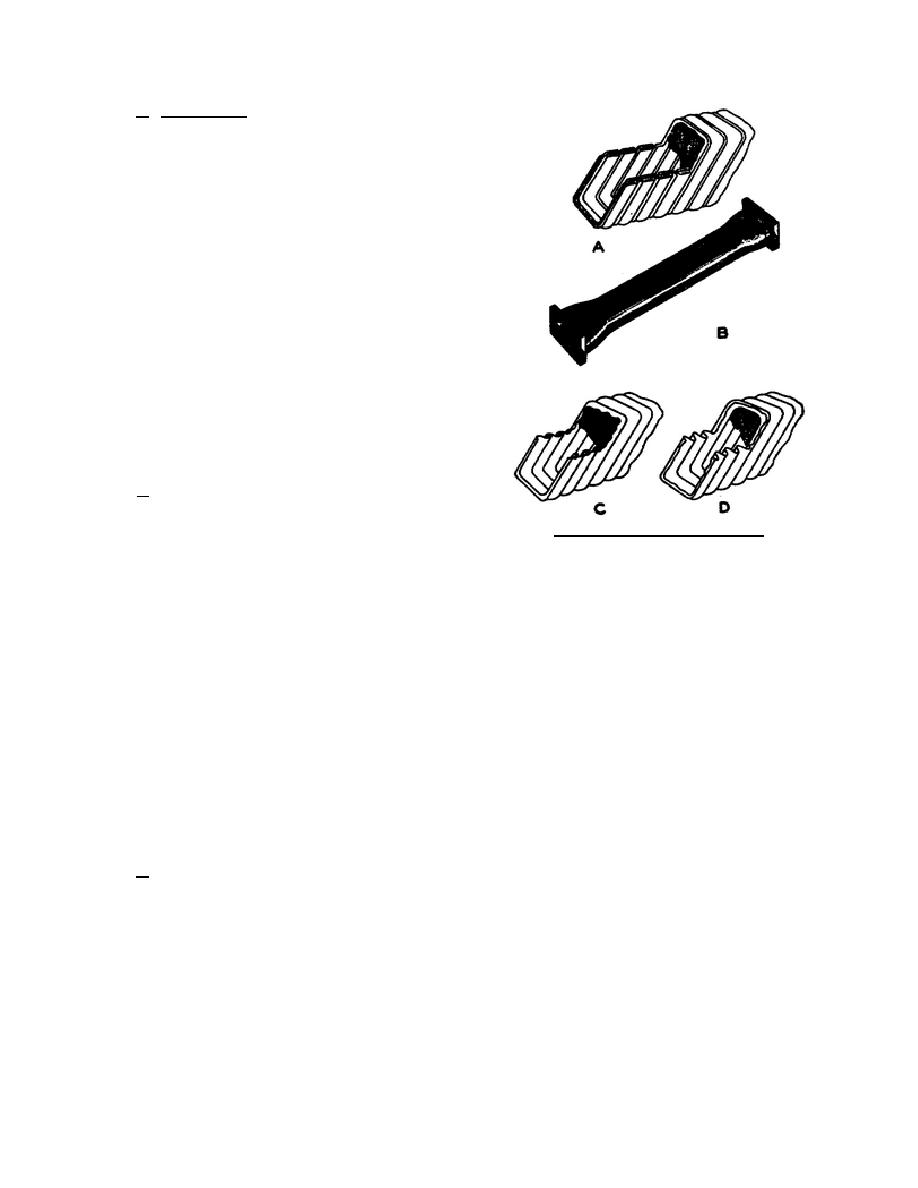
d. Construction. All bends can be made in
either the narrow or wide dimension of the
waveguide without changing the mode of operation.
The construction of these bends is very critical. The
inside of the waveguide must be smooth and free of
dents or ripples. Any distortion of the inside surface
will cause undesired reflection. Because of this, the
twists and bends are made at the factory and
supplied to the installation.
2-12.
FLEXIBLE WAVEGUIDE
A section of flexible waveguide is
sometimes used to connect two rigid sections of
waveguide when there is an alignment or vibration
problem. It is also used where the waveguide is
subject to flexure at a low rate. Because of its
construction, the flexible waveguide may be bent or
twisted in any desired direction.
a. Some common types of flexible
waveguides and their construction are shown in
figure 80 and explained in (1) through (4) below.
Figure 80. Flexible waveguide.
(1) The type of waveguide shown in A, figure 80, is constructed of spirally wound strips of brass
which are crimped together. When the waveguide is flexed, the strips slide one over the other
and contact is maintained.
(2) Part B of figure 80, shows a similar section covered with rubber and with flanged connectors
soldered to the ends. The rubber covering seals the waveguide so that it may be pressurized and
serves as a mechanical protection. This is the general appearance of all types of flexible
waveguides.
(3) Part C of figure 80, shows another spirally constructed waveguide. Each strip is crimped tightly
to the next stage so that no slippage is possible. The waveguide is flexed by bending the thin
walls of the corrugated metal.
(4) Part D of figure 80 shows a flexible, one-piece waveguide. Here again the thin corrugated metal
is bent.
b. Since skin effect keeps the current on the inner surface of the waveguide, the inside surfaces of the
flexible section are either chromium plated or silver plated for maximum current conductivity. The higher power
losses caused by reflections and standing waves of flexible waveguide make it impractical for general use. In
places where the use of flexible waveguide is required, the length is kept as short as possible to keep losses at a
minimum.
344 L2
78



 Previous Page
Previous Page
